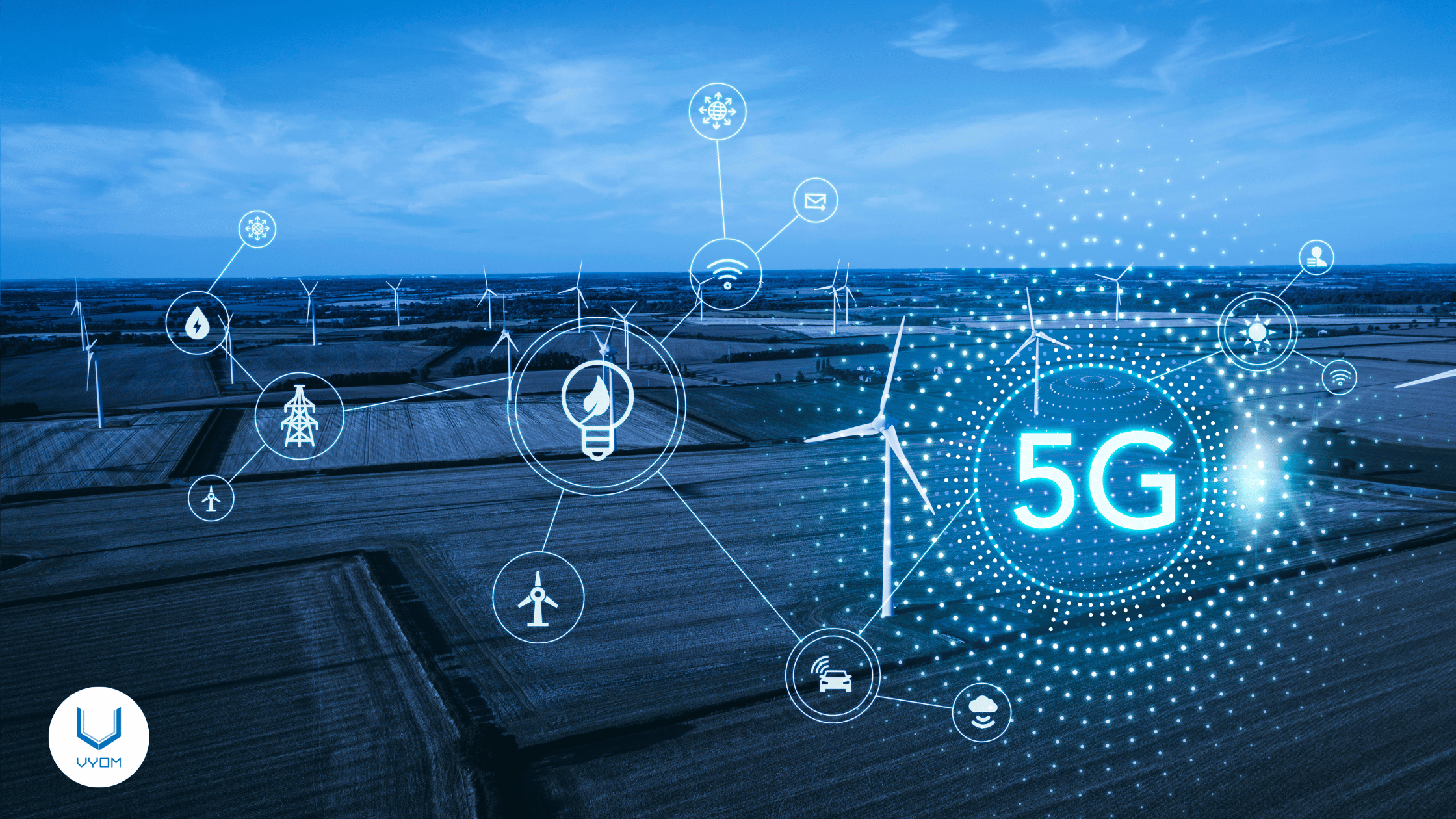Subscribe to our blog
Get updates via email
The technological landscape is experiencing an unprecedented transformation driven by the convergence of three powerful forces: 5G networks, Artificial Intelligence (AI), and Edge Computing. This convergence isn't just an incremental improvement—it's a fundamental paradigm shift that's redefining how we process data, make decisions, and interact with technology in real-time
5G: The Foundation of Ultra-Fast Connectivity
5G represents the fifth generation of mobile broadband technology, delivering speeds up to 10 times faster than 4G, with latency reduced to under 10 milliseconds. Beyond raw speed, 5G provides massive network capacity, supporting up to 1 million devices per square kilometer. This ultra-low latency and high bandwidth create the infrastructure necessary for real-time applications that were previously impossible.
The technology enables network slicing, allowing operators to create application-specific networks that are more resourceful and effective, enhancing the integration AI systems. This capability is crucial for supporting diverse applications simultaneously, from autonomous vehicles requiring split-second decisions to industrial IoT systems managing thousands of sensors.
Edge Computing: Bringing Intelligence Closer to the Source
Edge computing represents a fundamental shift from centralized cloud processing to distributed intelligence at the network's edge. By 2025, Gartner predicts that 75% of enterprise data will be processed at the edge, a dramatic increase from just 10% in 2018. This paradigm brings computation and data storage closer to where data is generated, dramatically reducing latency to under 5 milliseconds compared to 20-40 milliseconds typical of cloud computing.
Edge computing addresses critical challenges including bandwidth efficiency, real-time decision-making requirements, and data privacy concerns. By processing data locally, organizations can reduce operational costs, minimize network congestion, and maintain better control over sensitive information.
Artificial Intelligence: The Cognitive Layer
AI provides the intelligent cognitive layer that enables automation, prediction, and personalization across every function. Modern AI encompasses various forms including analytical AI for processing sensor data, physical AI for real-world environment simulation, and generative AI for creating intelligent responses. The integration of AI with edge computing creates "Edge AI"—a powerful combination that processes AI algorithms directly on local devices rather than relying on remote cloud services.
How 5G Empowers Edge AI
5G networks provide the essential infrastructure that makes edge AI truly powerful. The technology supports edge AI in several critical ways:
Ultra-low latency communication enables AI models deployed at the network edge to interact in real-time, crucial for applications like autonomous vehicles that generate 11-152 terabytes of sensor data daily and require sub-50ms response times for collision avoidance.
High device density support allows thousands of edge devices—sensors, cameras, robots—to operate concurrently without performance degradation, making smart factory and IoT deployments feasible.
Network slicing optimization creates dedicated network resources for edge workloads, prioritizing latency-sensitive AI traffic while ensuring quality of service for other applications.
Edge AI significantly improves 5G network performance through intelligent optimization:
Localized data processing reduces the distance data must travel, minimizing latency from milliseconds to microseconds. This is critical for applications requiring immediate responses, such as industrial automation or emergency response systems.
Bandwidth optimization occurs when edge AI processes data locally and transmits only essential insights rather than raw data streams. For example, smart factory cameras with embedded AI can analyze video feeds locally and send only alerts via 5G, reducing network congestion.
Dynamic resource management enables AI algorithms to predict traffic patterns and adjust 5G network parameters in real-time, improving spectrum management and energy efficiency.
Manufacturing and Industry 4.0
The convergence is revolutionizing manufacturing through intelligent automation. Edge AI enables real-time quality control, predictive maintenance, and autonomous operations. Smart factories use AI-powered cameras and sensors to detect defects immediately as products move along assembly lines, while 5G provides the reliable connectivity needed for coordinating multiple robotic systems.
Manufacturing facilities report double-digit efficiency improvements when implementing edge AI solutions, with predictive maintenance reducing downtime by identifying potential equipment failures before they occur.
Healthcare Revolution
Healthcare is experiencing transformation through edge-powered medical devices and telemedicine. Wearable devices equipped with edge AI can monitor vital signs continuously and detect anomalies in real-time, with 5G ensuring instant communication with healthcare providers.
The healthcare edge computing market is projected to reach $12.9 billion by 2028, driven by applications including remote patient monitoring, diagnostic imaging, and surgical assistance. Edge AI enables ambulances to analyze patient data en route, allowing hospitals to prepare treatments before patient arrival.
Smart Cities and Infrastructure
Urban environments are becoming more intelligent through the integration of these technologies. Traffic management systems analyze real-time vehicle data to optimize flow, while public safety systems use edge AI for threat detection and resource allocation. The combination enables cities to respond to events as they happen, improving citizen services and operational efficiency.
Autonomous Transportation
Autonomous vehicles represent one of the most demanding applications of this convergence. These vehicles process massive amounts of sensor data requiring sub-millisecond decision-making capabilities. Edge AI handles local processing for collision avoidance and navigation, while 5G enables vehicle-to-everything communication for coordinated traffic management.

